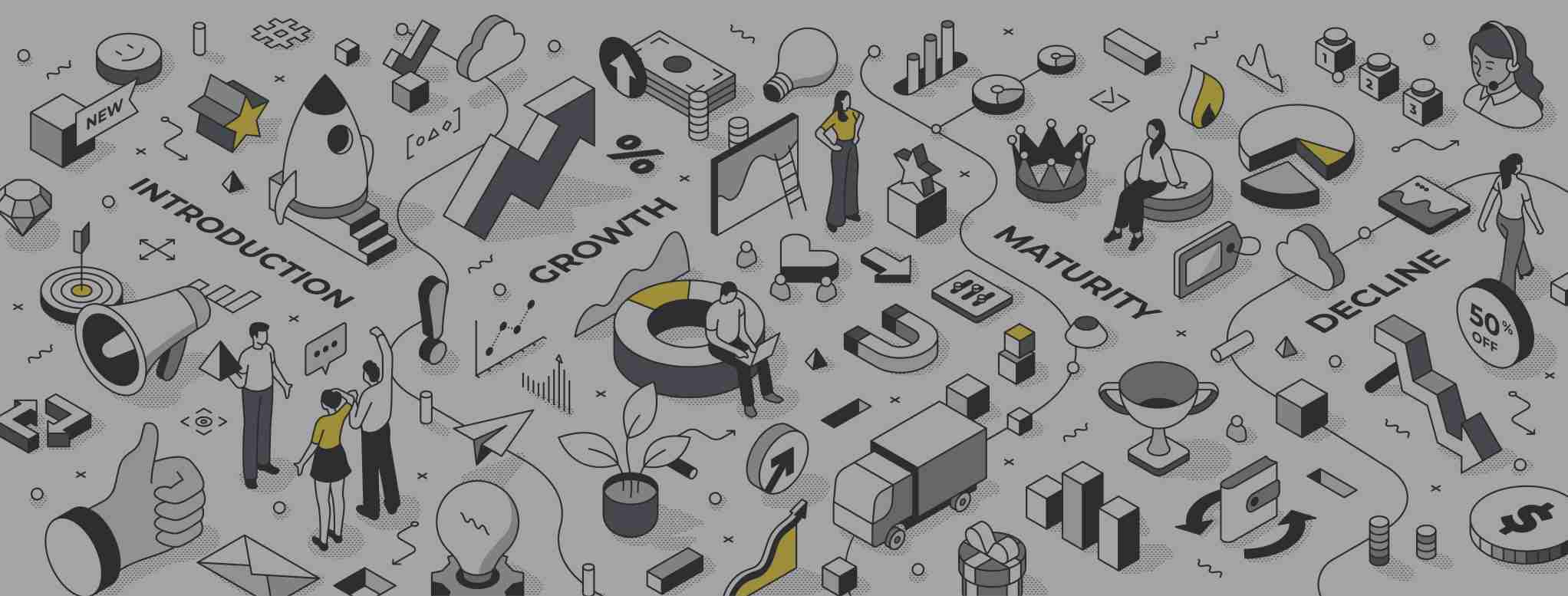The technology stack you choose is pivotal to your company's operational excellence and financial health. As HubSpot and go-to-market experts who work within SaaS and fintech, you’d be surprised how often we see Frankenstein tech stacks. We can’t overstate the impact this has on teams and a company’s overall performance and profitability.
BIAS’ ARISE™ Framework (Assess, Research, Ideate, Strategise, Execute), particularly the "Assess" phase, enables significant enhancement of your tech’s efficiency and cost-effectiveness, as well as your team’s performance. This article delves into how this segment of ARISE™ aids founders and revenue teams in making informed decisions about their tech stack; focusing on operational excellence, ROI, people and partnerships and the custom vs. off-the-shelf solutions debate.
What is operational excellence - and why is it so vital to growth?
Operational excellence is a mindset that embraces certain principles and tools to create a culture of quality within an organisation. It’s a critical component in your success because it means every employee can see, deliver and improve the flow of value to a customer. This approach employs the tools of earlier continuous improvement methodologies, such as lean thinking, Six Sigma, OKAPI and scientific management.
The concept of operational excellence was first introduced in the early 1970s by Dr. Joseph M. Juran while teaching Japanese business leaders how to improve quality. It was formalised in the United States in the 1980s in response to "the crisis" among large companies whose market share was being eroded.
Operational excellence involves several key components, as illustrated in Juran's Model, which leads to better business results and cultural excellence. These components include:
- An integrated management system (IMS)
- A culture of operational discipline
- Adherence to guiding principles that lay the foundation for excellence
The Shingo Model further identifies 10 "Guiding Principles" as forming the basis for building a sustainable culture of organisational excellence, such as respect for every individual and leading with humility.
Operational excellence: The path to Revenue Operations
Revenue Operations (RevOps) teams achieve operational excellence by aligning sales, marketing and customer service teams to drive revenue growth and optimise the customer journey. RevOps is a strategic approach that integrates and aligns these departments with streamlining processes, leveraging data-driven insights and enhancing the overall customer experience to maximise revenue growth and profitability.
To achieve operational excellence, RevOps teams focus on several best practices:
- Align goals across departments: Ensure that sales, marketing and customer service teams share a common goal related to revenue growth, fostering a unified vision and collaborative planning.
- Leverage data and analytics: Use centralised data management and data-driven decision-making to inform strategies and measure the effectiveness of RevOps initiatives.
- Streamline processes: Identify and document key processes across departments, removing silos to ensure smooth information flow and collaboration.
- Implement the right technology: Choose technology solutions that can seamlessly integrate with each other and automate repetitive tasks to increase efficiency.
- Focus on customer experience: Design RevOps strategies with the customer experience at the forefront, regularly gathering and acting on customer feedback.
- Develop a culture of continuous improvement: Invest in ongoing training for team members and adopt an iterative approach to regularly review and refine RevOps strategies.
- Effective communication: Encourage open and regular communication between departments and maintain transparency in operations and decision-making.
- Performance measurement and KPIs: Establish and monitor key performance indicators that reflect the goals of RevOps, tracking progress and identifying areas for improvement.
- Change management: Gain stakeholder buy-in and manage resistance to change through clear communication and involvement.
- Customer success integration: Ensure that RevOps strategies contribute to customer success and long-term value
By adhering to these practices, RevOps teams can effectively achieve operational excellence, leading to sustainable growth and success for the organisation. Don’t worry if you aren’t there yet, it’s a process, one that ARISE™ can help you achieve. How?
Operational excellence: Optimising your tech stack
Operational excellence is not just about doing things right; it's about doing the right things efficiently. Our “Assess” phase evaluates whether your current tech stack aligns with your operational goals. What does this look like in real life?
Assessing the current tech stack
The first step towards operational excellence is conducting a thorough assessment of the existing tech stack. This involves cataloguing every software and application in use within the organisation, clearly defining its primary purpose and the specific use case it addresses.
This "tool audit" helps identify redundancies, underutilised tools and areas where tools are creating silos that block effective workflows. By understanding the current state of the tech stack, you can make informed decisions on what needs to be kept, replaced, retired or consolidated.
What we often see is that leadership will buy something well-known with the mentality of, “No one got fired buying IBM”. So they might say, “We know Salesforce is a good CRM. We'll buy that.”
But is it fit for purpose? Does it do what you want it to do? Probably. But do you need all of what it does? Do you need to pay for all that? And that’s when things can get overwhelming for your teams and complex for your organisation.
Streamlining processes and tools
Therefore the next step is to streamline processes and tools. This involves eliminating redundant ones and centralising work data on as few platforms as possible. Less is best in this instance.
Streamlining not only reduces the complexity of the tech stack but also minimises the cognitive load on employees who currently have to switch between multiple tools, thereby enhancing productivity. Moreover, consolidating can lead to significant cost savings and ensure that the existing investments directly contribute to the business' goals.
What makes ARISE™ unique is that we've taken 15 years of experience working with start-ups through the mid-market and pre-built our HubSpot Onboarding with automated workflows, ticket pipelines, customer success surveys and custom objects so your operations are streamlined from the get-go.
All of this is carefully wrapped around 144 KPIs we report on across marketing, sales, customer success, people and finance. This pre-configuration eliminates the need for time-consuming setup processes, allowing your team to focus on what they do best - driving the business forward.
Leveraging automation
Automation is a cornerstone of operational excellence. During the "Assess" phase, the ARISE™ Framework helps identify automation opportunities within your tech stack. By leveraging HubSpot's robust automation capabilities, you can optimise team efficiency, reduce manual errors and ensure that your operations run like a well-oiled machine.
Furthermore, automation facilitates the rapid deployment of new features and services, enabling you to respond swiftly to market demands.
Enhancing integration and collaboration
A well-integrated tech stack ensures seamless communication between different technologies, which is essential for effective team collaboration and data accessibility.
Integration enhances the flow of information across teams and departments, enabling data-driven decision-making and reducing the time spent on finding, analysing and reporting data.
For instance, HubSpot CRM platforms, including their marketing sales and service tools, can provide a unified view of customer interactions, improving customer relationship management and sales outcomes. We’re big believers in the power of a 360-degree view of the customer and alignment across revenue teams (because they deliver big returns), and this is what ARISE™ sets you up for.
Furthermore, tools such as Cognism or Zoominfo can also fill gaps in the tech stack, ensuring data is accurate, up-to-date and synced across tools, which benefits customer experience and sales.
Continuous improvement and feedback
Operational excellence is an ongoing journey that requires continuous improvement. Organisations should regularly review their tech stack to adapt to changing business needs and technological advancements.
Creating a feedback loop where employees can voice concerns and suggestions about the tech stack empowers them to take an active role in defining the technological infrastructure. This not only improves employee satisfaction but also ensures that the tech stack remains aligned with the company’s operational goals.
Focusing on Key Performance Indicators (KPIs)
Finally, operational excellence requires a focus on key performance indicators (KPIs) that measure the effectiveness of the tech stack in achieving business objectives.
By analysing metrics such as sales velocity, conversion rates and customer retention rates, organisations can gauge the impact of their tech stack on operational efficiency and make data-driven decisions to optimise performance.
Our pre-built KPIs and OKRs are pushed into your HubSpot, which means you can benchmark and analyse key metrics across revenue teams within 48 hours of onboarding.
ROI: Maximising tech stack performance
To accurately gauge ROI, companies should focus on KPIs that reflect the efficiency and effectiveness of their tech stack in driving business growth. We ensure that the following are added to your HubSpot in this phase:
- Customer Acquisition Cost (CAC), which measures the total spend required to acquire a new customer
- Customer Lifetime Value (CLV), which predicts the total net profit a business can expect from a customer throughout their relationship
- Time to Market (TTM) is another critical metric, as a well-optimised tech stack should enable faster deployment of products and services, thus enhancing competitiveness and revenue potential
By comparing CAC against CLV, businesses can assess whether their tech stack is enabling them to acquire and retain customers profitably. Additionally, measuring productivity and efficiency gains from automation and integration within the tech stack can provide insights into operational improvements.
Ultimately, a thorough analysis of these metrics will reveal the financial impact of the tech stack on the GTM strategy, guiding future investments and strategic decisions.
Calculating tech stack ROI is not always a straightforward calculation and often means taking a longer term view. But this assessment phase is designed to optimise and simplify this for you.
Impact on team performance: Streamlining for success
The complexity of a cobbled-together tech stack can significantly hinder team performance. It becomes a frustration to work in a company where nothing’s integrated and you spend all your time trying to build actionable insights off of disparate systems and processes.
Teams we work with are often drowning in data retrieval, analysis and reporting. This impacts your team culture and retention. It impacts your revenue.
The "Assess" phase evaluates the integration and synergy between different technologies, ensuring that your team has a cohesive and efficient system to work with. This empowers your team to make data-driven decisions fast.
This streamlined approach minimises administrative burdens and allows your team to dedicate more time to strategic initiatives that drive revenue and growth. In an environment where we’re all trying to do more with less, this is a no-brainer.
Partnerships and people can make or break tech stack success
You can streamline, automate and integrate and still struggle with your tech stack. This is because the people element is often overlooked in the drive for optimisation. Three points here:
- Invest in employee training and development: Ensure that team members are well-trained and knowledgeable about the tech stack and its capabilities. Investing in employee development can enhance the effective use of technology, leading to better performance and easier measurement of ROI. We do this as a part of the ARISE process.
- Engage in strategic partnerships: Collaborate with technology providers and industry experts to gain insights and support in optimising tech stack performance and measuring ROI. Strategic partnerships can provide access to specialised knowledge, tools and best practices that can enhance the effectiveness of the tech stack. This is an easy win.
- Embrace continuous learning and adaptation: The tech landscape and business needs are evolving fast enough to give us all whiplash, making it essential for SaaS and fintech companies to adopt a mindset of continuous learning and adaptation. This involves staying informed about the latest technologies, trends, and best practices, as well as being willing to pivot strategies based on performance data and market changes. This needs to be led from the top-down - here’s a guide to building a culture of sustainable growth.
Custom vs. off-the-shelf: Tailoring your tech stack
The debate between custom and off-the-shelf solutions is a nuanced one. The "Assess" phase provides a thorough analysis of where off-the-shelf solutions can serve your needs effectively and where investing in custom solutions might be more beneficial. This tailored assessment ensures that your tech stack is more than just a collection of tools but a strategic asset that can adapt to your business’ evolving needs.
Custom solutions offer unparalleled flexibility and scalability, while off-the-shelf solutions provide quick deployment and community support. The ARISE™ Framework helps you strike the right balance by utilising pre-built “off-the-shelf” workflows and reporting within HubSpot but also creating bespoke custom objects and additional reporting once we understand you and your needs better.
Conclusion
The "Assess" phase of the ARISE™ Framework is an invaluable asset for founders and revenue teams aiming to achieve operational excellence, maximise ROI and enhance team performance.
By providing a strategic evaluation of your tech stack, the ARISE™ Framework positions your company to thrive in a competitive business environment, ensuring that your technology investments are both prudent and powerful.
Want to learn more? Get in touch with the BIAS team today.




